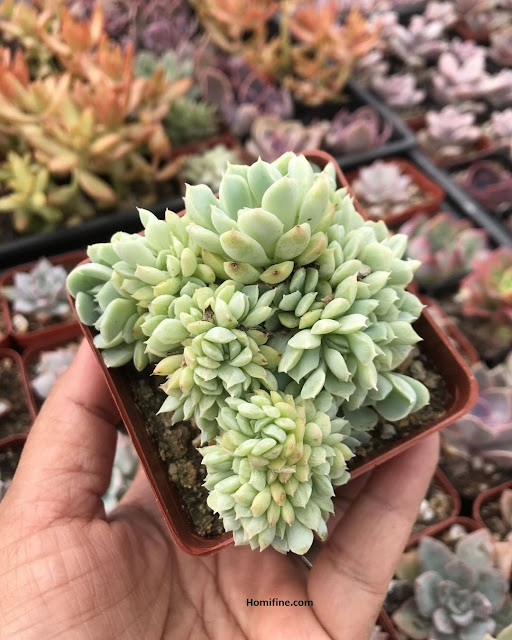 |
| Planting and Caring for Echeveria Elegans |
Homifine.com -- Echeveria is a popular non-cactus succulent with a striking bluish color that looks amazing. This plant is reminiscent of a nearly identical artificial rose. Because of its rapid growth rate, ornamental plant enthusiast can easily reproduce this plant through cuttings. This mexican echeveria is derived from the hidalgo division and has a rosette of fleshy, stemless, bluish leaves up to 10 cm long.
Echeveria elegans propagation
 |
| s.is.for.succulents |
This succulent can be propagated by producing new offsets at the mother plant's base. These offsets will cluster neatly and spread out into the container. These offsets will cluster neatly and spread out into the container. Plants grow denser in warmer climates. Plant the soil in a container or directly desert in a rock garden. Curable stem or leaf cuttings should be removed 3 - 4 days before planting.
The proper pot size
 |
| plantsofjoyvip |
Start with a small pot 4 - 6 inches deep and gradually increase the planting. Because the roots of this succulent are small and shallow, a large pot is recommended to accomodate more plants, soil volume, and medium.
Growing requirements for echeveria
.jpg) |
| plantsofjoyvip |
- Location
All echeverias prefer areas with bright but indirect light. It grows well indoors and prefers a location with mostly afternoon sun. The best examples are window sill. Keep the soil moist to avoid dead plants.
- Land
To allow echeverias to thrive, use well-drained soil. For growth, use an all-purpose potting mix, sand, grave, or a good compost mix soil.
- Water
Excessive watering is disliked by this plant because it can lead to root rot and death. Echeveria is extremely sensitive to overwatering, which can cause the leaves to fall off and rot, resulting in post problems. So that the watering schedule is optimal.
Treatment for echeveria
 |
| plantsofjoyflashsales |
- Fertilizing
Use a balanced and well-diluted liquid fertilizer with a maximum strength that can be used for 10 - 20 days to encourage faster and larger plant growth. Use fertilizer based on the age of the plant, and reduse fertilization if it is in a shady location.
- Repot
To allow the echeveria to outgrow its container, it must be replanted. After repotting, you can use a new pot and fill it with fresh soil. Repotting should be done during the growing season or in the spring. Avoid repotting in extremely cold, hot, or wet weather.
- Pests and pathogens
All pests can have an impact on the growth of echeveria. Mealybugs and spider mites can kill plants by causing them to dry out. Furthermore, excessive watering is a major factor that can cause plants to rot and be attacked by pests because they are weak to death.
For those of you looking for a minimalist home design that ranges from simple to modern. Please leave your message and comments on Home Design Picture on Facebook.
This article should be useful for those of you looking for design ideas and house plans.
Hopefully, you will find it easier to create your ideal home.
Don't forget to share it with your friends and family so that it can help others.
Author : Lynda
Editor : Munawaroh
Source : Various Source
Homifine.com is a collection of minimalist home designs and floor plans ranging from simple to modern. There are also several home decorating tips and tricks for various themes. Our main theme is the design and layout of the house, as well as the inspiration for the living room, bedroom, family room, bathroom, house prayer room, house terrace, and child's bedroom.



.jpg)











